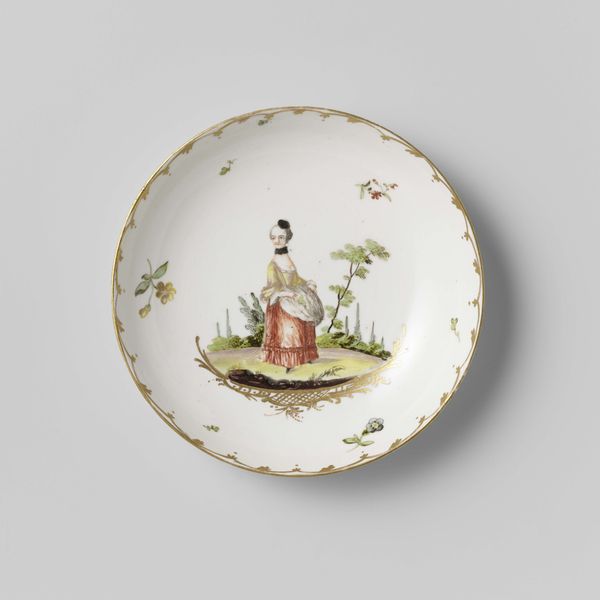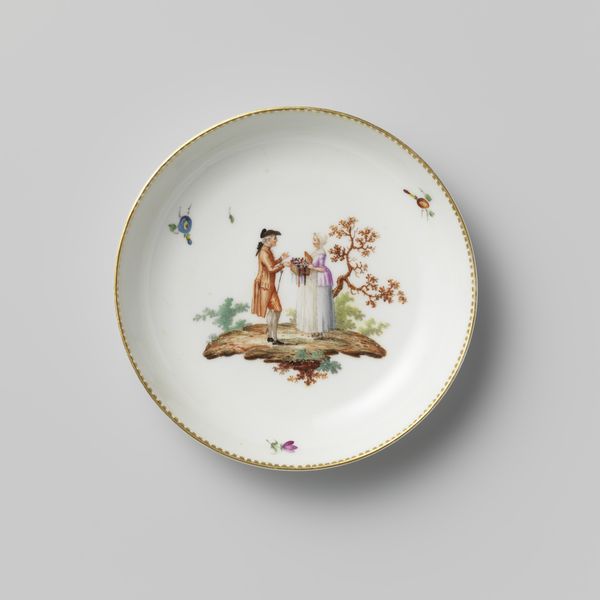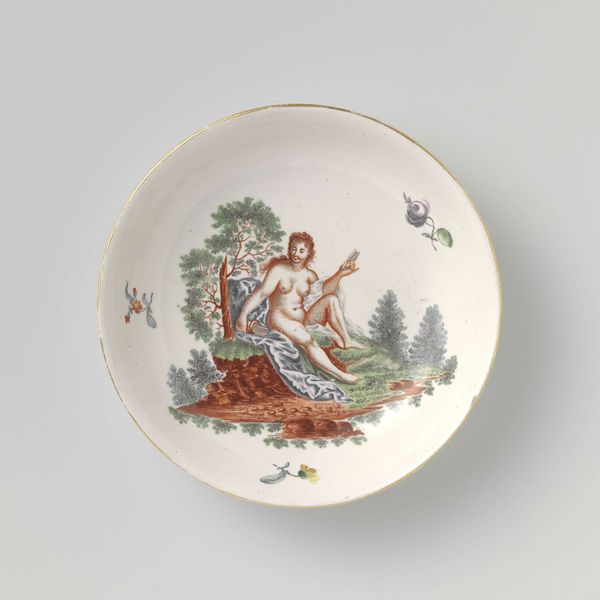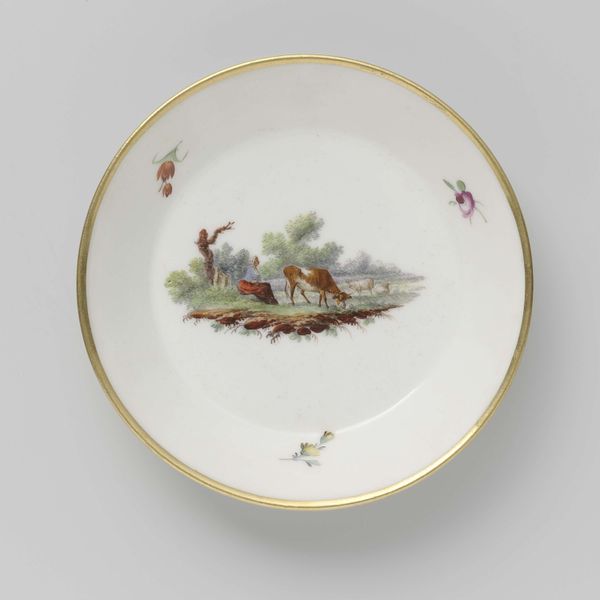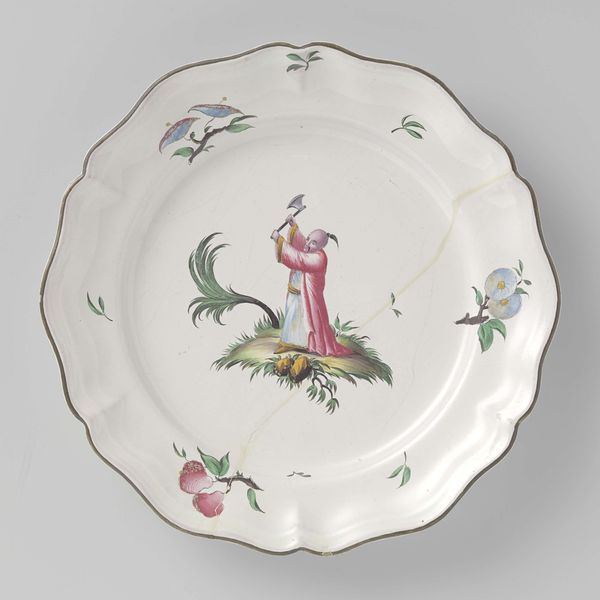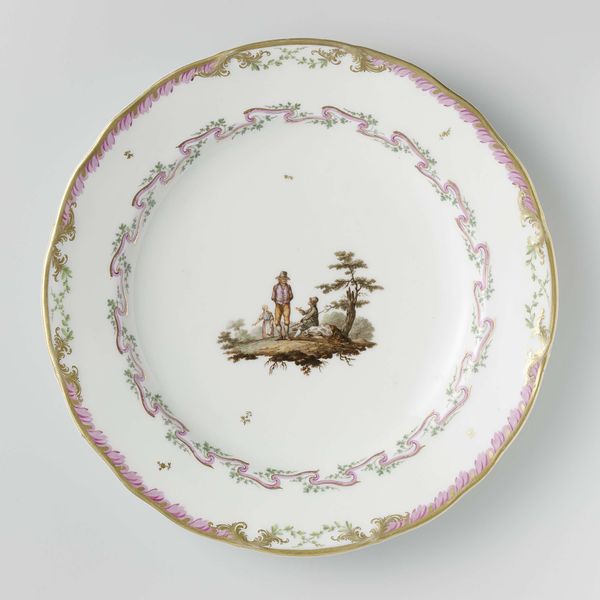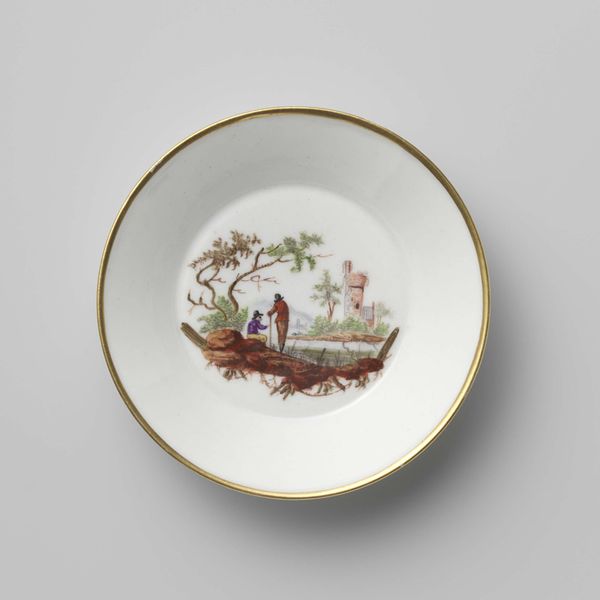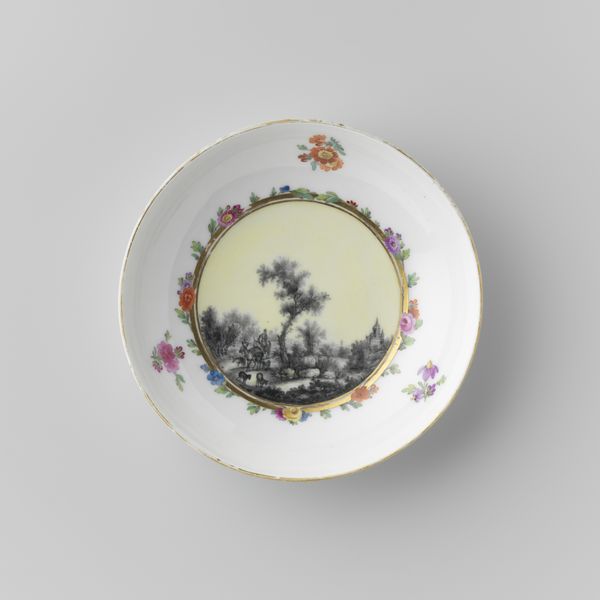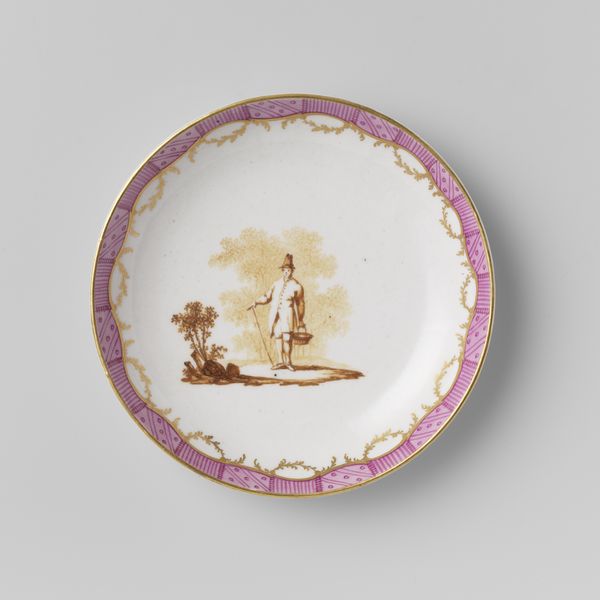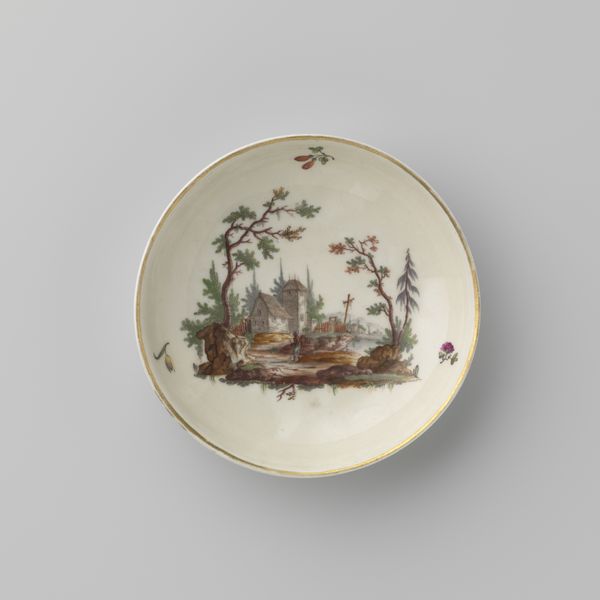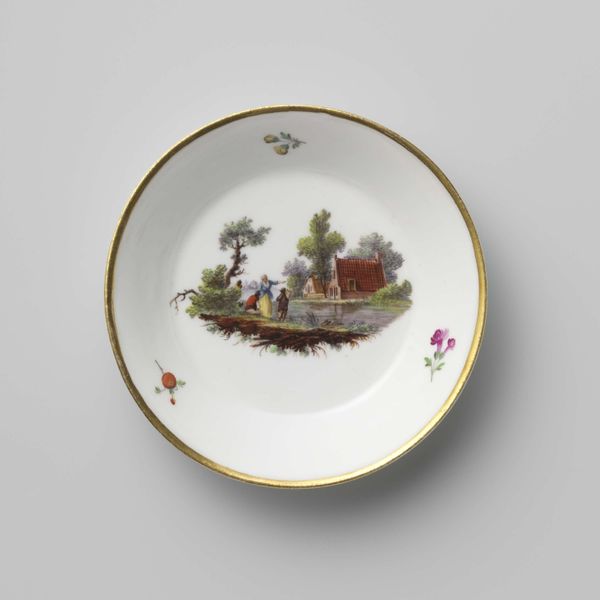
Schotel, veelkleurig beschilderd met chinoiserieën en losse bloemtakken langs de randen c. 1765 - 1770
0:00
0:00
Dimensions: height 5 cm, diameter 14 cm
Copyright: Rijks Museum: Open Domain
This dish, painted by the Weesper porcelain factory, features chinoiseries and floral patterns along the rim. The image speaks to a long history of cultural exchange and artistic interpretation. Made in the Netherlands, it reflects the 18th-century European fascination with the ‘Orient’, known as chinoiserie. The central figure, dressed in what Europeans imagined to be Chinese attire, stands in a landscape dotted with pagodas and stylized plants. Such images weren't accurate depictions of China, of course, but rather fantasies constructed through limited knowledge and colonial encounters. They served to exoticize and Other the East. This imagery was highly fashionable and lucrative for the Weesper factory, revealing how art and commerce were intertwined, and how European identity was constructed in relation to its colonial projects. Historians draw on a wide range of materials, including trade records, travelogues, and design manuals, to uncover the complex cultural dynamics that shaped these artworks. The meaning of this dish lies not only in its aesthetic qualities, but also in its reflection of broader social and political contexts.
Comments
No comments
Be the first to comment and join the conversation on the ultimate creative platform.
